_-_copy.jpg)
The new wing of the Bruce Museum at dawn. Ben Crowther photo, courtesy the Bruce Museum.
By Kristin Nord
GREENWICH, CONN. – The New Bruce is an architectural triumph, with its gleaming cast stone and glass exterior and imaginative use of the site’s varied terrain. This local treasure, with its focus on the intersection of art, science, education and community – has been treated with care and genuine reverence in its recent reincarnation.
The $67 million project has added 44,000 square feet to the museum, and its transformation has been extensive. There are spacious modern galleries for both art and science, and state-of-the art education and community spaces. There is a welcoming entrance and lobby, with an adjoining lecture hall, a bistro and a gift shop. There is now more than ample room for its burgeoning art and science collections.
The Bruce has always been a treasure for local families, and it has acquired generations of fans who literally go back generations. But the building, bequeathed by textile merchant Robert Moffat Bruce (1822-1909) to the Town of Greenwich in 1908, had its obvious shortcomings – it was dark and its entrance high on a hill was fortress-like and forbidding. For Steve Dumez, the principal and design director of the architectural firm Eskew/Dumez/Ripple, this project was a perfect opportunity to design a building that was “grounded by a strong understanding of context, culture and environment.”
Dumez had been drawn to Connecticut’s rocky outcroppings as a graduate student at Yale University; and he took the image of the striated rock he’d encountered in local quarries as the inspiration for the museum’s façade. As one enters the building and encounters the sculpture of Tim Prentice and Gabriel Dawes – the first a set of Prentice’s kinetic curtains, the second a spellbinding recreation of the color spectrum of light built from eight miles of sewing thread visitors are already embarking on an excursion into the realms of art and science, and encountering works in which innovation, creativity and technical know-how have come into play. Both works suggest the museum may have some surprises in store for us.
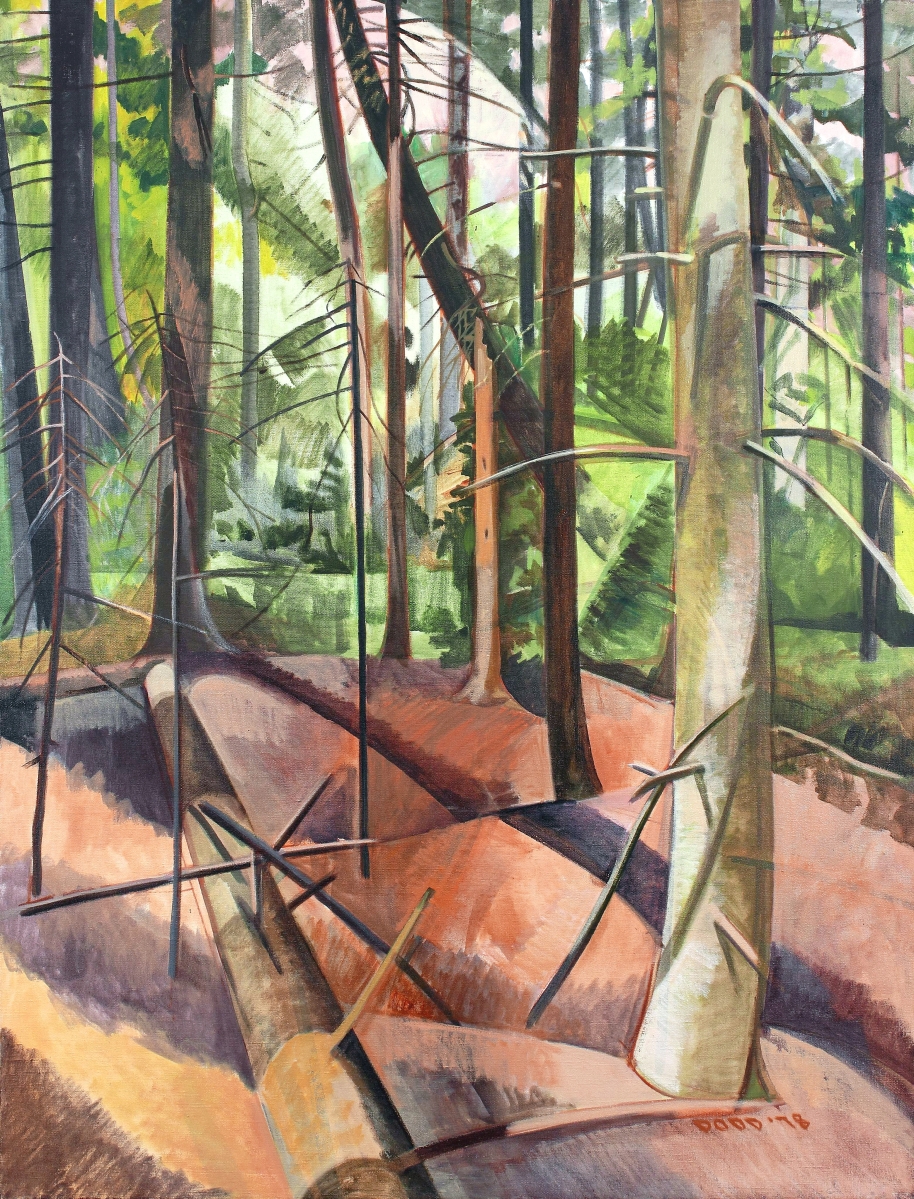
“Natural Order” by Lois Dodd, 1978, oil on linen, 50 by 38 inches. Hall Collection. Courtesy Hall Art Foundation. ©Lois Dodd, image courtesy of Alexandre Gallery, New York City.
In other words, Let the fun begin.
Loyalty to the Bruce runs deep, and perhaps it’s no surprise that many of its strongest boosters are adults who first walked through the museum’s doors as children. Kathleen Holko, manager of school and tour services, said, “The Alexandra and Steven Cohen Education Wing will be able to expand its hands-on science and art programs significantly, and to grow its STEAM programs aimed at the region’s immigrant children. These programs are proving to be highly effective aides to boosting literacy and interdisciplinary thought and experimentation for households in which English is not a primary language.”
At the same time, the wing will enable the Bruce to expand upon its hands-on programs and double its outreach. A whopping 50,000 school children are expected to visit during this inaugural year.
Throughout its more than 100-year history, the museum has had major benefactors, who helped build its extensive collections. But in recent years, the Bruce’s local support has grown in leaps and bounds, and it’s doubled its inventory.
Now, with the opening of the new William L. Richter Art Wing, the Bruce has the capacity to give marquee billing to its art collections. And with its eight galleries and extensive bequests, the institution has emerged as a major center for the study of global art from 1850 through the present.
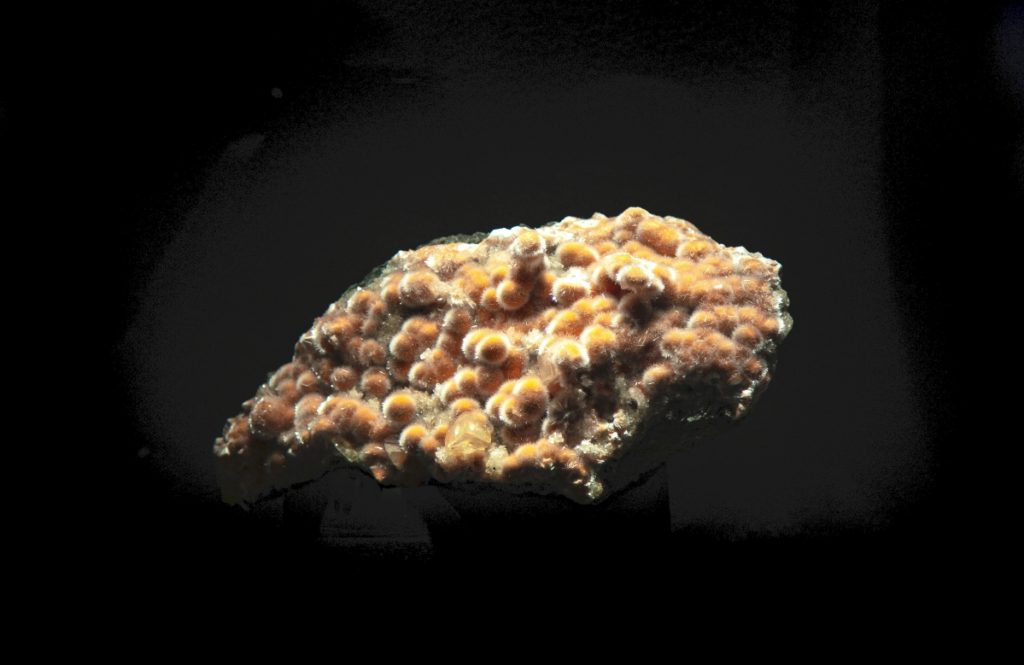
Thomsonite with Mesolite. Promised Gift of Robert R. Wiener. —David A. Ross photo
“The new William L. Richter Art Wing represents a vast leap forward,” Robert Wolterstorff, the museum’s Susan E. Lynch executive director, commented recently at the museum’s press preview. “It will enable the Bruce to mount exhibitions that explore the global stories of modern and contemporary art, and to become a museum with a global perspective and reach. The spacious gallery for changing art exhibitions will put us on the circuit for international traveling shows and provide flexibility to mount small installations,” he added.
In its permanent art galleries, where the Bruce’s original collection of early Twentieth Century works by members of the Greenwich Society of Artists is now on display, a major bequest of European and American art will make its official debut in the fall. The collection of paintings, sculpture and works on paper includes art by luminaries Mary Cassatt, Alberto Giacometti, Henry Moore, Childe Hassam, Winslow Homer, Edward Hopper, Camille Pissarro and Andrew Wyeth, among others.
Dr Margarita Karasoulas, the Bruce’s art curator, has done a masterful job in mounting exhibitions in all the museum’s eight art galleries. A major survey of contemporary artist Lois Dodd (American, b 1927), inspired by interior and exterior scenes from her homes and studios in the lower East Side of Manhattan, Blairstown, N.J., and Cushing, Maine, is a major draw; “Lois Dodd: Natural Order” will be on view through May 28.
Dodd was an original founder of the Tanager Gallery in New York, one of the early artist cooperatives in New York City. She has forged her own distinctive path on the edge of Abstract Expressionism, Pop art and Minimalism throughout her lifetime. Her spring green landscapes, close-ups of flowers, nocturnal skies, dense woods, windows, clotheslines, weather-worn clapboard barns and urban scenes devoid of people, reflect subtle changes in light, weather and atmosphere of the locales where she has lived, Karasoulas writes, and “her direct yet unassuming pictures reflect an acutely observational approach to painting, often oscillating between representation and abstraction.”
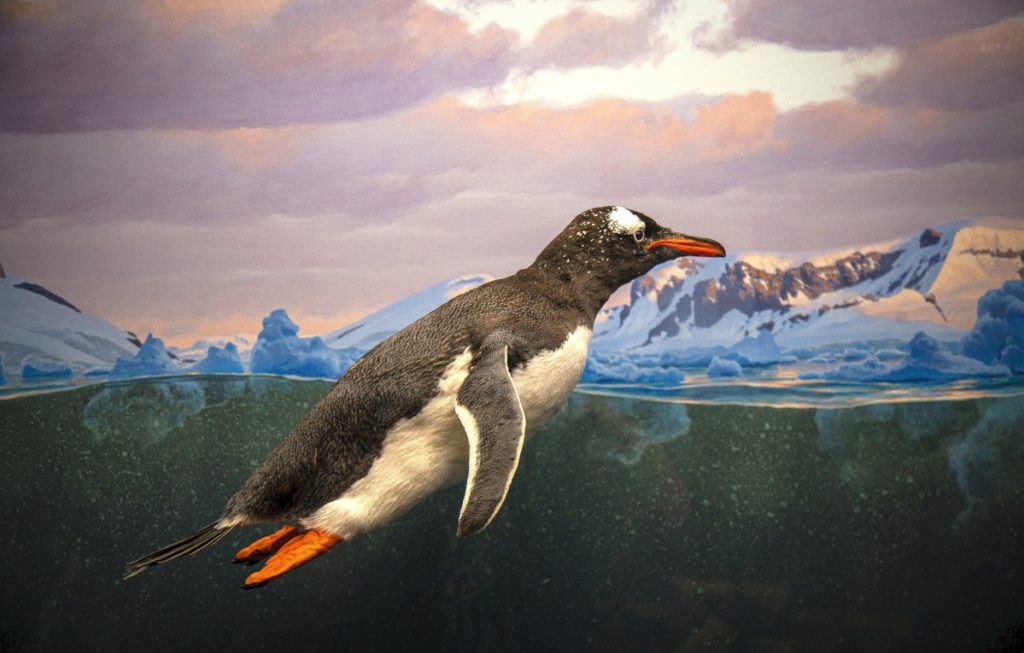
Gentoo penguin. Gift of Sea World. Bruce Museum, 2020. —David A. Ross photo
The Bruce’s other new art galleries are serving up a bountiful, groaning board. There is an exhibition on loan from the William Louis Dreyfus Foundation that showcases the artmaking of James Castle, the self-taught Idahoan artist who was born deaf and never learned to read or write. Castle’s extensive body of work came often from materials he scavenged on his family’s property.
On view through July 9 is “Then Is Now: Contemporary Black Art in America,” which courses through recent social history, beginning with works made in or around 1968 and culminating with examples made as recently as 2021. The exhibition looks at the historical legacies of slavery, the era of the Civil Rights Movement and the racial reckonings of the present day. And it asks viewers to consider the ways in which individual and collective histories inform one’s understanding of identity, memory and heritage.
In “Material Matters: The Sculpture of Elie Nadelman,” museumgoers through September 24 will learn about the ways in which the artist’s use of innovative materials increasingly became a defining part of his practice. Nadelman moved from conventional materials such as bronze, marble and stone, to wood and plaster and eventually toward inexpensive nontraditional materials, such as Galvano-plastique, papier mache, plaster and ceramics.
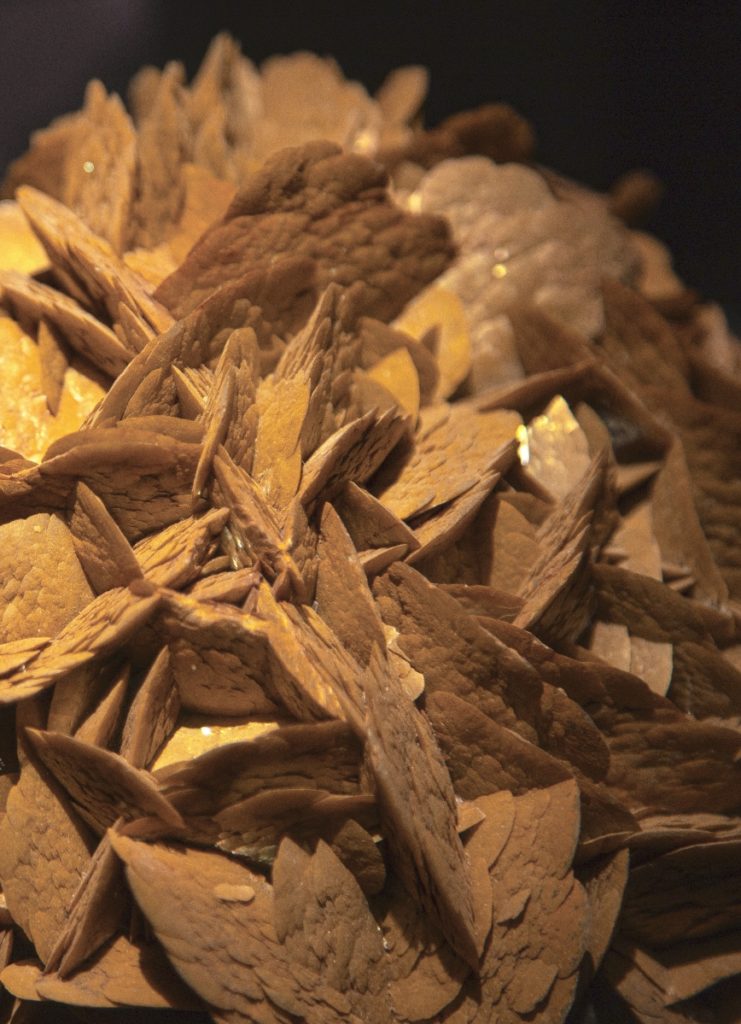
Siderite. Gift of Robert R. Wiener. Bruce Museum, 2019. —David A. Ross photo
In the development of the new Bruce, Dumez took pains to design space in which he integrated natural light and views of nature. The courtyard garden is a stunning work of living art, installed by the Boston Landscape Architectural Firm, Reed Hildebrand. The firm has also designed a series of meandering paths that will lead from the building proper and include sculpture and installations of native trees and shrubs. Connecticut’s rugged natural beauty and its evolution as a region will remain a leitmotif in this, as one experiences environmental changes and the potential threats of climate change first-hand. When the new Bruce is fully landscaped, the property and the building will have become a cohesive whole.
Take your pick if you visit in the coming months, as there is no way one can take in all that the new Bruce has to offer in a single trip. Will you wend your way through the museum’s permanent galleries devoted to nature’s cycles? You’ll find tectonic plates being created and destroyed; tides rising and falling; and animals changing their activity patterns from day to night. Its galleries focus on our region’s Geology, Paleontology, Ice Age, Marine Ecosystems, Terrestrial Ecosystems, and finally what we encounter in our own backyards. The museum recommends a stop midway through the galleries for hands-on activities.
Or immerse yourself and your children in “Penguins! Past and Present,” an exuberant exhibition curated by the Bruce’s science curator, Dr Daniel Ksepka, who has published groundbreaking research on penguin fossils, feathers and genomes. He takes visitors on a spirited romp with the penguin’s ancient ancestors of 60 million years ago and with the aids of dioramas, video and interactive activities explores the evolution and challenges to what he believes are the world’s most remarkable birds.
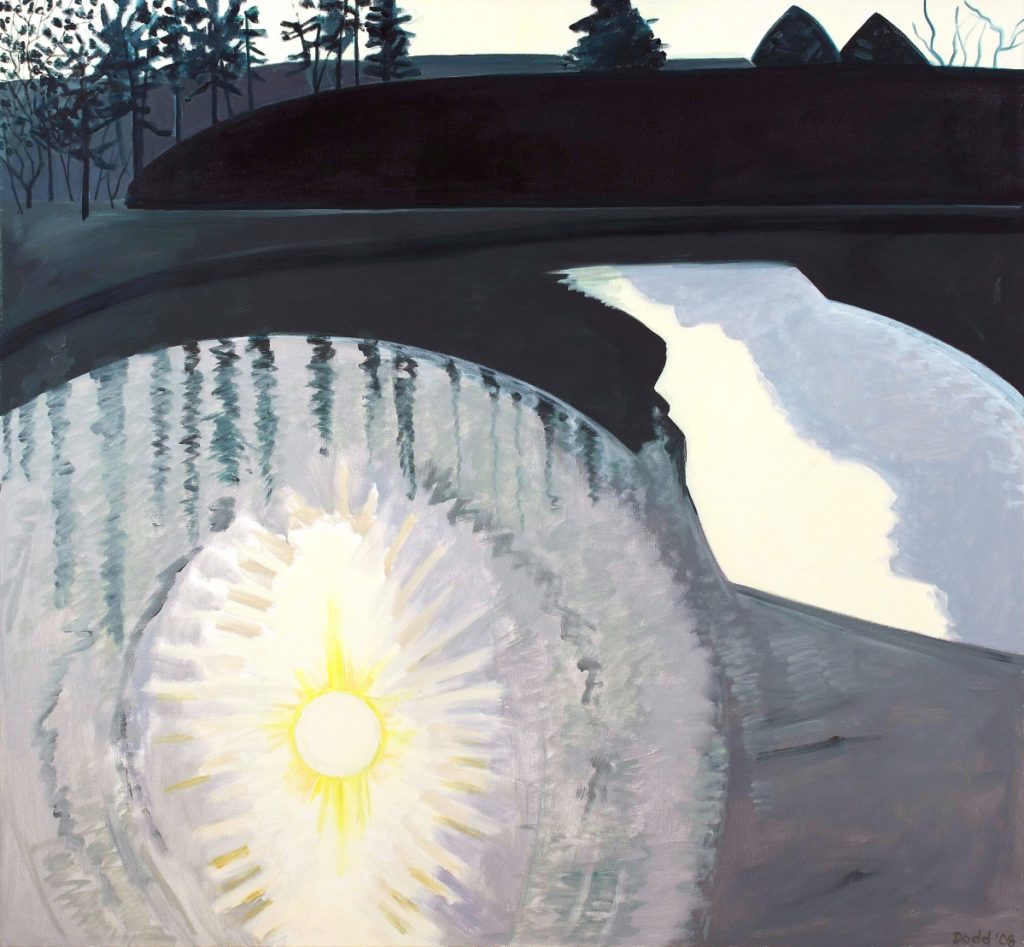
“Winter Sunset, Blair Pond” by Lois Dodd, 2008, oil on linen, 48 by 52 inches. Courtesy Private Collection, Holyoke, Mass. ©Lois Dodd, image courtesy of Alexandre Gallery, New York City.
For many, chances are good the Robert Wiener Minerals gallery with its million-dollar collection will become a favorite stop. If these exquisite specimens don’t dazzle and astonish, visitors may want to check their pulses.
Walking through the galleries during the press preview, the new Bruce’s shared kinship with The Kelvingrove Art Gallery and Museum came to mind. The Kelvingrove is a marvelous Glaswegian institution where specimens in glass vitrines share exhibition space with the art of The Glasgow Boys and Charles Rennie Mackintosh. At heart, these two institutions function as old-style chock-a-block cabinets of wonder.
Bank of America Southern Connecticut, the new Bruce’s lead partner, is underwriting free admission on Tuesdays. One can only hope families will take advantage of the company’s largesse and make frequent trips to the Bruce this spring and summer.
The Bruce Museum is at 1 Museum Drive. For information, www.brucemuseum.org or 203-869-0376.















_-_copy.jpg)







